Back in February 2025, I told you that I was venturing down the 1911 rabbit hole. In that article, I detailed two ideas I wanted to chase down. One was the dark horse, a 9mm project that I am using to teach myself how to do some 1911 work on my own. I’ve been talking about that Springfield Armory Operator AOS in 9mm quite a bit (with lots of photos). To date, I’ve installed a one-piece mag well and mainspring housing, a new trigger, new safety, and completely gutted the fire control system and replaced that with new parts. It’s a joy to shoot, but that’s not the subject of today’s post. In the original 1911 post, I also talked about my idea of the Marksman Combat Special.
Given that my Springfield Loaded Black Stainless was my first pistol purchase, and has some sentimental value, I didn’t want to screw it up. So I decided to go to the professionals for this one. First, let’s talk about the concept.
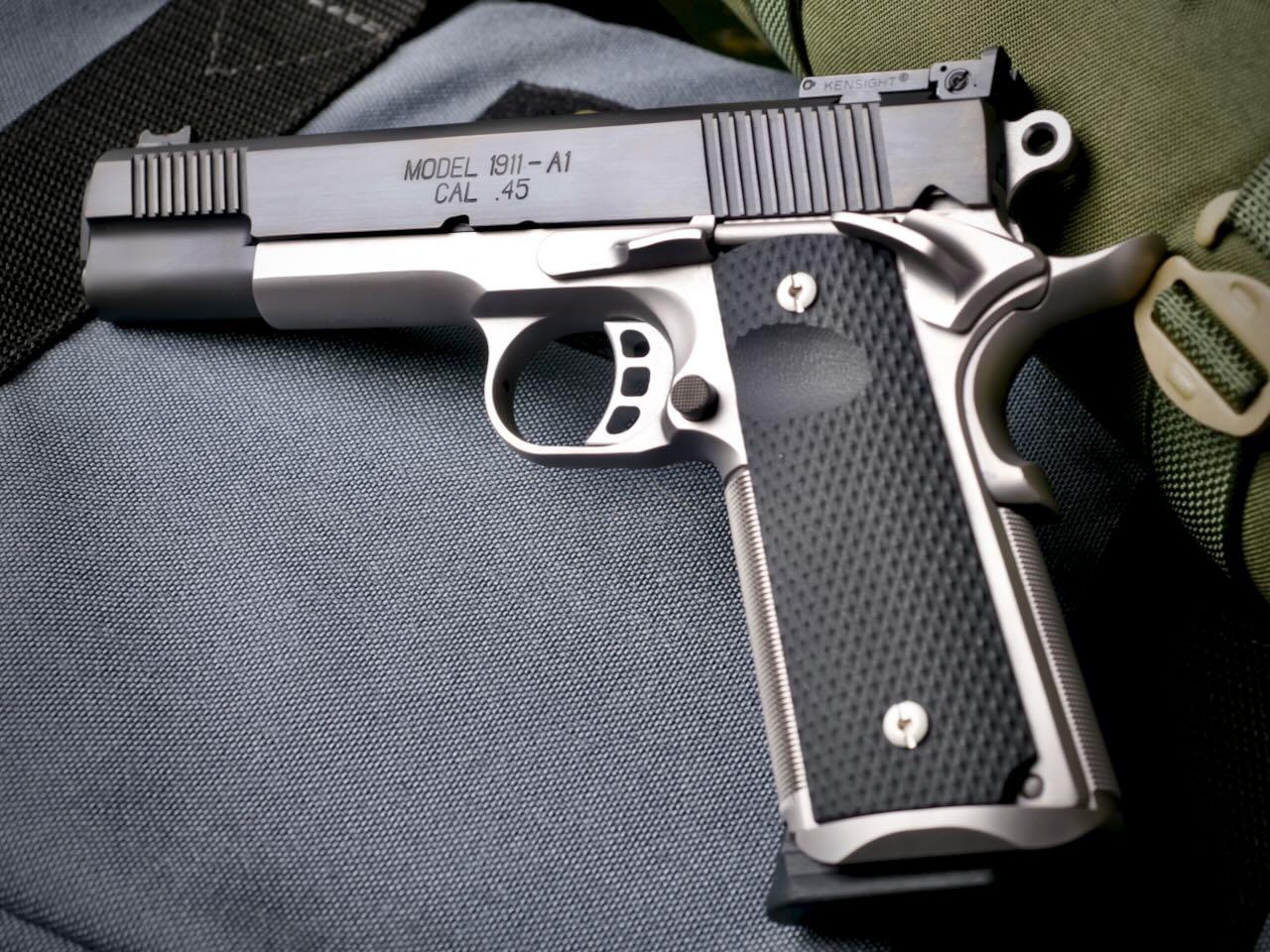
The Marksman Combat Special Inspiration
Keith Wood, from Guns & Ammo, once explained the Pachmayr Combat Special as such:
“Pachmayr” referred to the Combat Special built under legendary gunsmith Frank A. Pachmayr’s banner. These particular guns were built on Colt 1911s during the 1970s and early 1980s by a handful of ’smiths in Pachmayr’s employment. At the time, these epitomized that era’s custom 1911s. Jeff Cooper owned a personalized one, as did Charles Askins and Ray Chapman. Sport shooter Rob Leatham earned his by winning the 1983 IPSC World Championship.
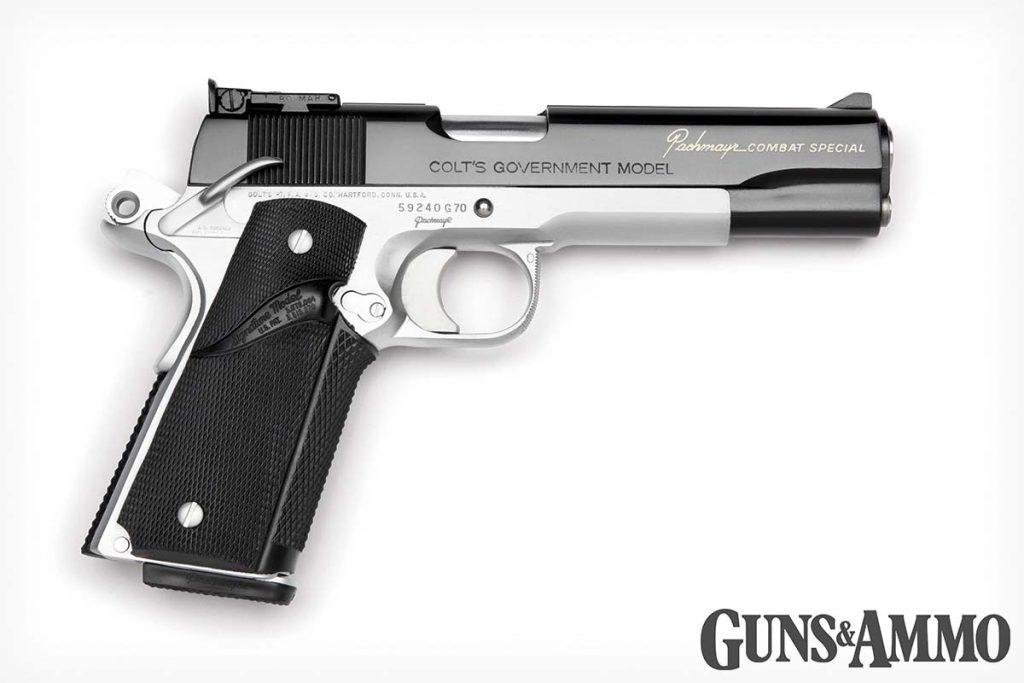
Keith goes on to say that the Pachmayr was his “Grail Gun” ever since he read Ross Seyfried explain that the Pachmayr was the ‘Perfect’ 45 ACP auto loader.
As I’ve said many times, I am not a clone dork. I don’t particularly find enjoyment in trying to rebuild exact “clone correct” copies of particular guns. Not the least of the reasons for that is that we often have better parts today than were available in any particular era. Still, I do like to make homages to things that are classics and influential. So my goal was a pistol that had elements of the Pachmayr, but done to my tastes and modern enhancements.
The goal was something two-toned, with modern finishes and custom touches. My stated purpose was USPSA single stack or IDPA CDP competition, and if it proved reliable enough then I might even consider carrying it as well. That was the guidance I gave to the gunsmith at least.
The Starting Gun
To recap, my starting point was a Springfield Armory Loaded Black Stainless Target in 45 ACP that I purchased back in 2006 to commemorate commissioning into the Air Force. It’s an Imbel model with slide and frame forged in Brazil. Springfield moved manufacturing to the US several years ago, and no longer uses Imbel as a source. You can tell the difference in roll markings between these older guns and newer ones, as this one has actual roll marks while my Operator is laser engraved with much sharper lettering.
I was into a whole theme of black and stainless at the time, to include the M1A Loaded I purchased around the same time.
This pistol was my only handgun for several years, serving both home defense duty as well as light competition. At least as much competition as I understood at the time, which consisted of bowling pin shoots set up by old guys at the local Rod & Gun club on base who thought I was weird for using it while they all rocked revolvers.
Once I got my Beretta and started shooting a lot of 9mm, this gun languished in the back of the safe. To be honest, it had some feeding and reliability issues that made me not trust it for serious use and I just sort of…moved on.
As I enter “fudd years” (call it arriving at “middle age”), I decided to do more with it.

Enter Evolution Armory
Shortly after getting the idea, I set out looking for who could do the work. Scouring the 1911 enthusiast forums, I kept seeing some consistent names pop up. One of them was Mark and Dave at Evolution Armory. They’ve been in the 1911 gunsmithing game since 2013 or so, and built up a great reputation for guns and services at a fair price. We exchanged a few emails back and forth in January, but then the conversation died off while I got busy with other projects.
In late April, Mark contacted me to see if I was still interested. They had cleaned up their backlog and were ready to take on more work. So I figured, why not?
The final build sheet included the following:
- Checker font strap at 25 LPI
- Undercut the trigger guard
- Complete trigger job with Harrison Custom parts (ring hammer, sear, disconnector, strut, trigger)
- Install Ed Brown one-piece mag well/MSH (also checkered at 25 LPI)
- Replace faded factory tritium adjustable night sights with new Kensight target sights (black rear, fiber optic front)
- Flatten and serrate top of slide
- Ball end mill cuts on the slide
- Install Harrison single-side safety
- Install Harrison slide stop
- Polish slide flats
- Refinish slide in DLC
- Refinish all lower parts in silver DLC
I didn’t set out to refinish the frame and lower parts, but Dave suggested it as a way to ensure consistent finish rather than all of the varying stainless colors and finishes. Dave also had to “move” the retention pin hole for the mainspring housing because the original Springfield hole was slightly out of spec. Dave also installed a new plunger tube assembly.
As you can see from the detail photos below, they did an amazing job.
Turnaround time for the whole project was about 7 weeks, which really isn’t that bad at all. They kept me updated the whole time with progress and asking questions and preferences as they went.
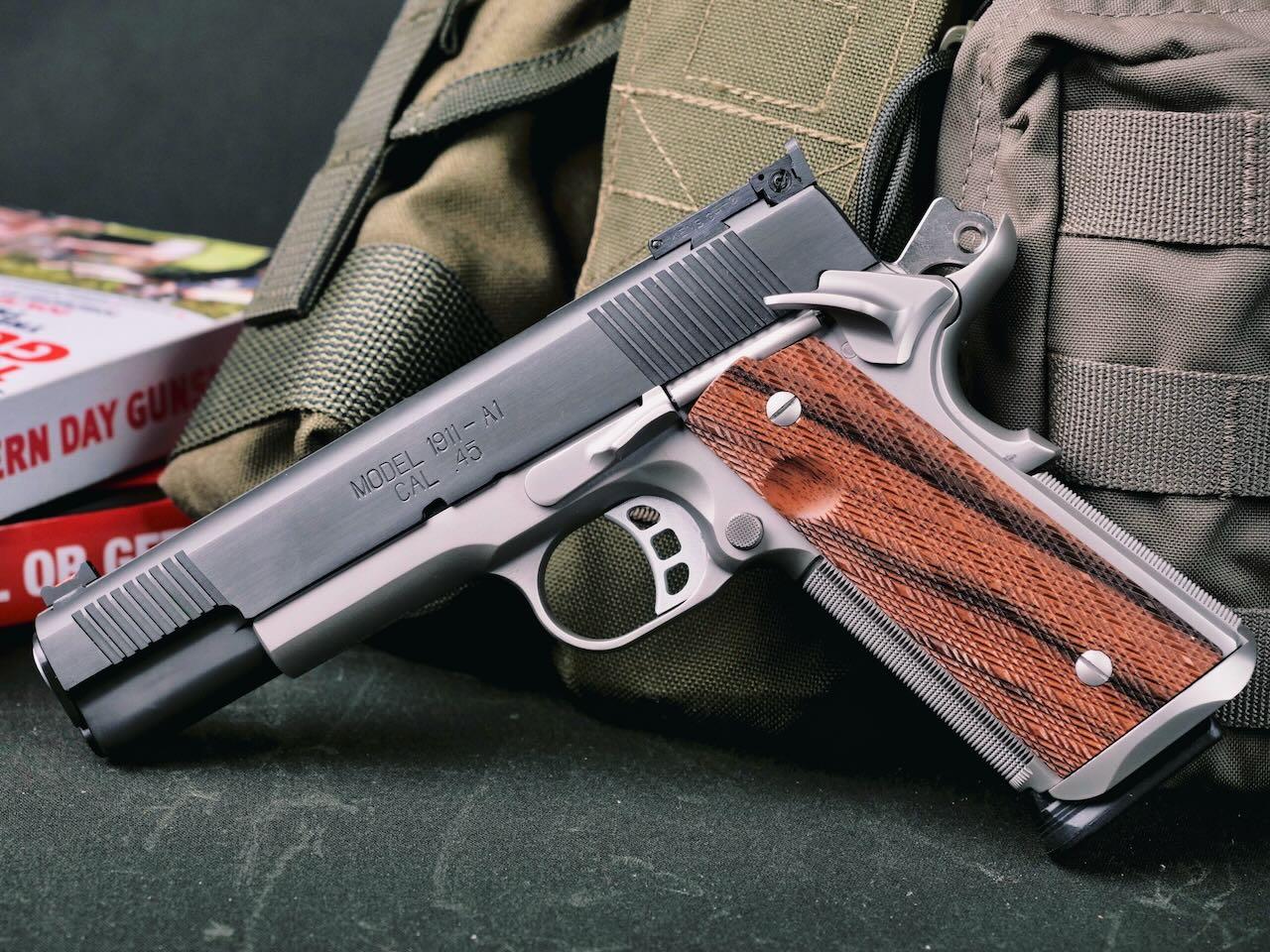
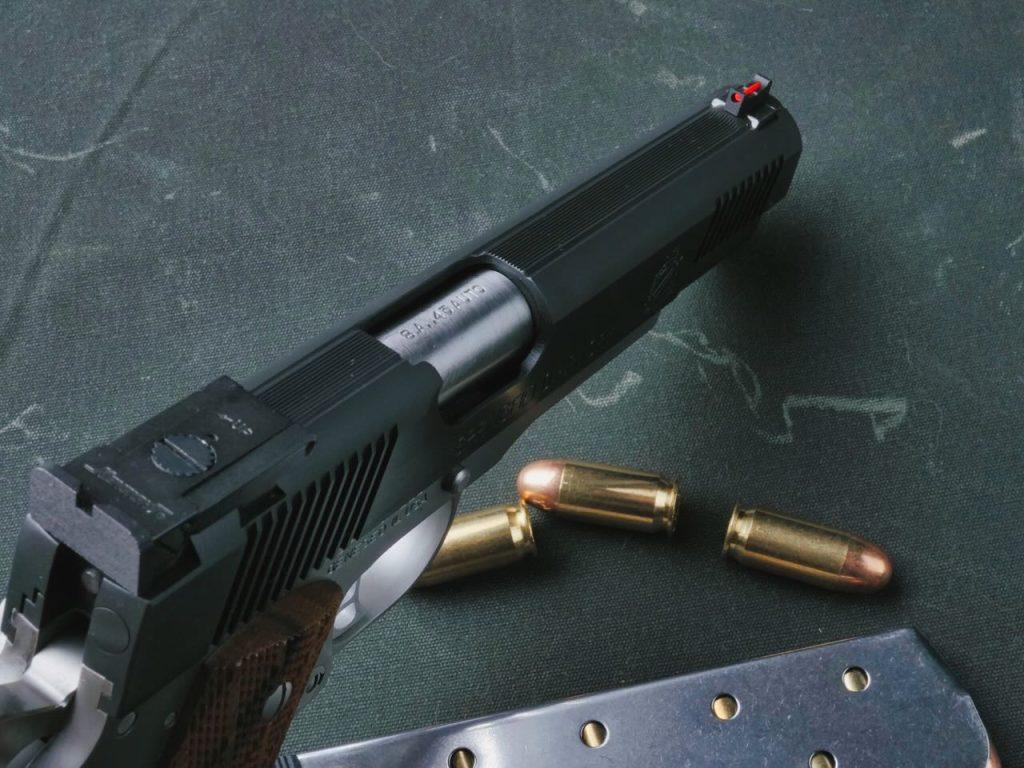
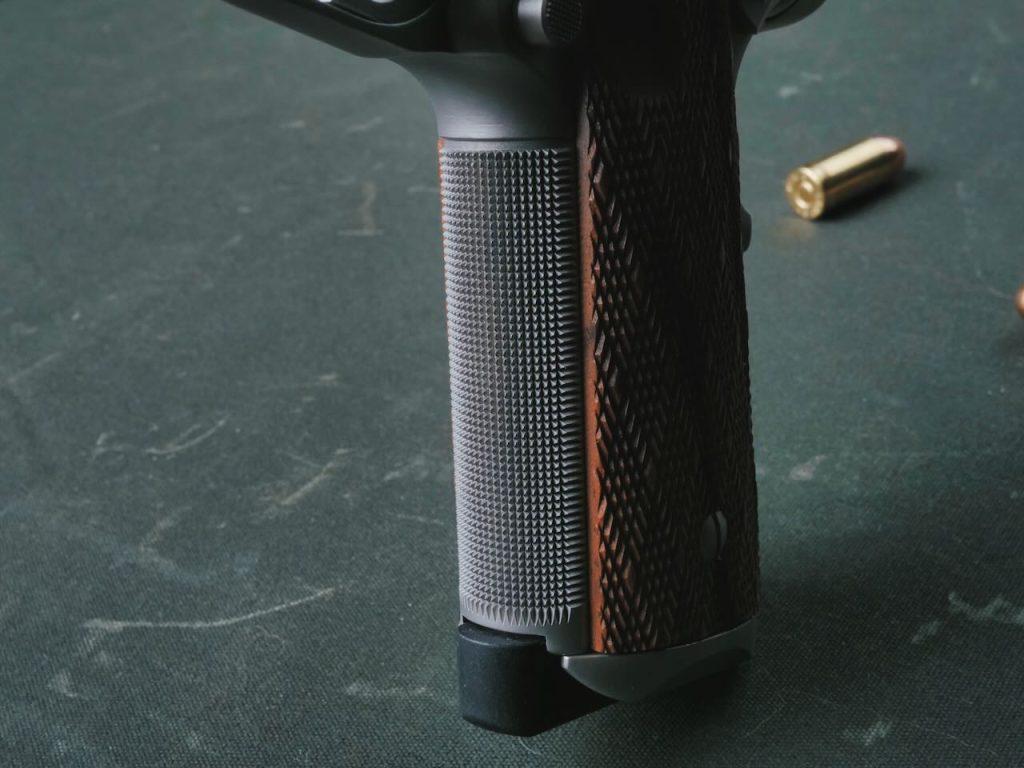

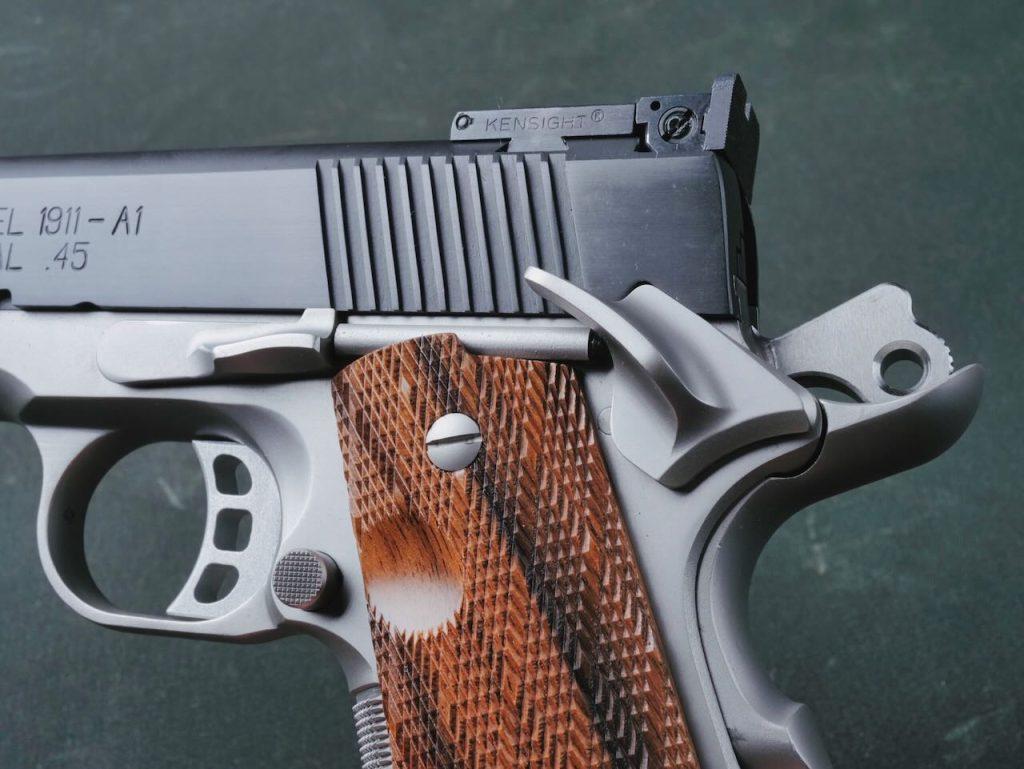
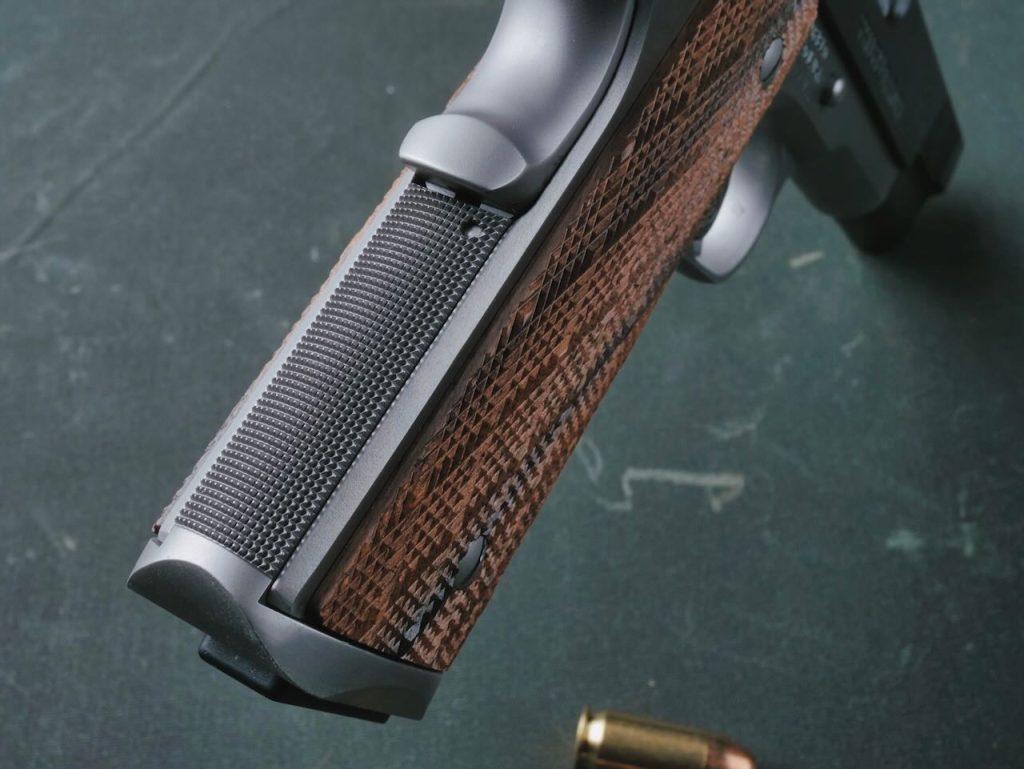
Additional Notes
Aside from Dave’s handiwork, I did a few other parts “under the hood.” For example, being a 2006 model, this pistol had Springfield’s internal locking system (ILS) that was supposed to be a safety feature. You used a small key (which I long ago lost) and could “lock” the main spring housing and prevent it from working. Moving to the Ed Brown unit required a new 23 lb spring assembly and pins. I also installed a Wilson Combat 17 lb flat wire mainspring with new spring guide sized for the narrower flat wire profile.
Different Shoes
I couldn’t settle on the final look, to be honest. When I sent it to Evolution, I included a set of rubber Pachmayr grips to go along with the theme. I cut out the middle part, knowing that the front strap was going to be checkered. To be honest, I liked the look but didn’t care for the gap between the bottom of the grips and the mag well.
Next was a pair of skip line checkered English Walnut stocks from WoodCaliber. As you can see in the photos, these also look beautiful and they are well done. I’m thinking these are more for “dress up,” though. For a “business” look, I enjoyed the black stocks with screws. So I finally settled on a pair of black Lok G10 Roughnecks.
The nice thing about metal guns with grip panels like this is that you can swap them out whenever you feel like it.
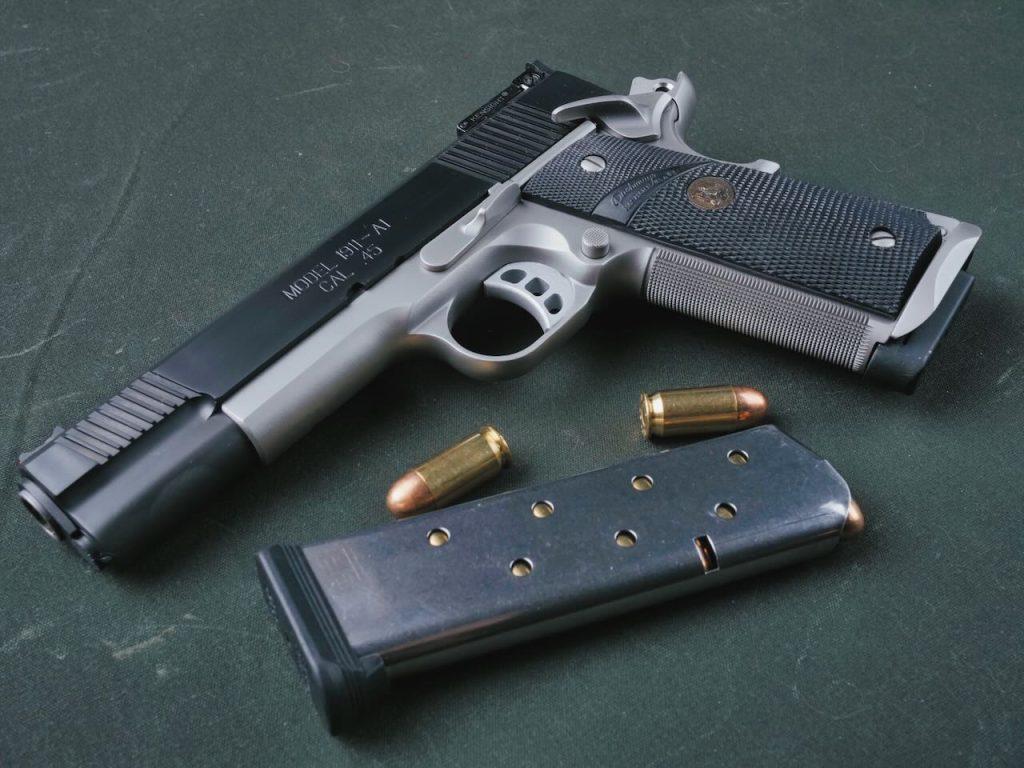
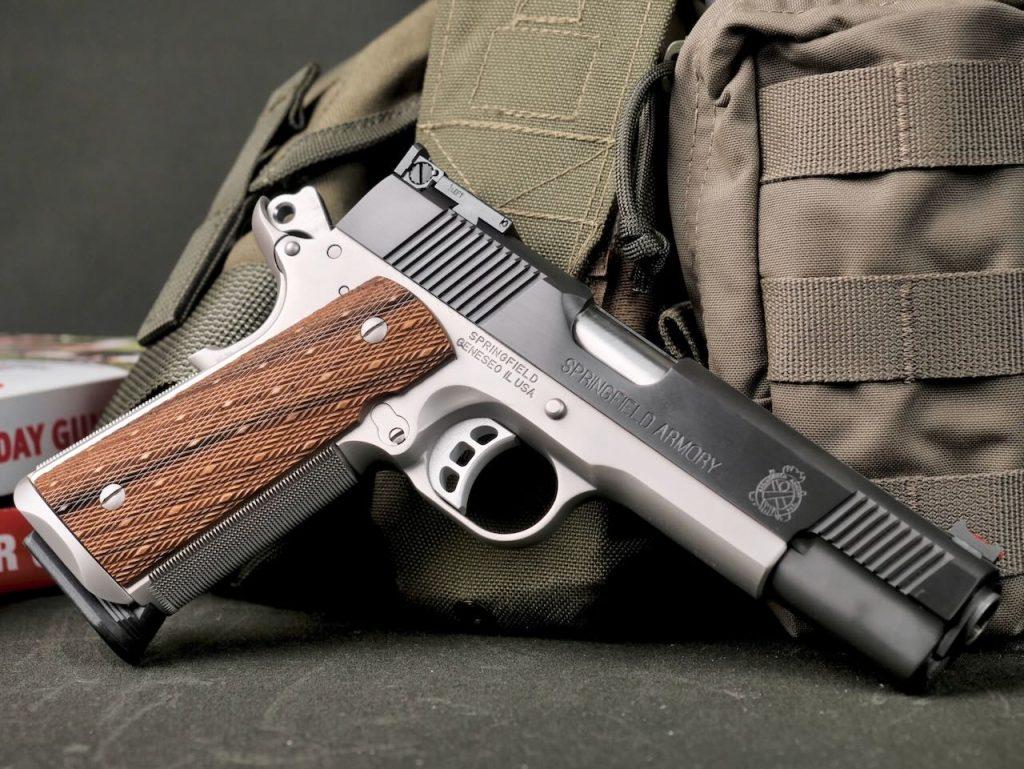
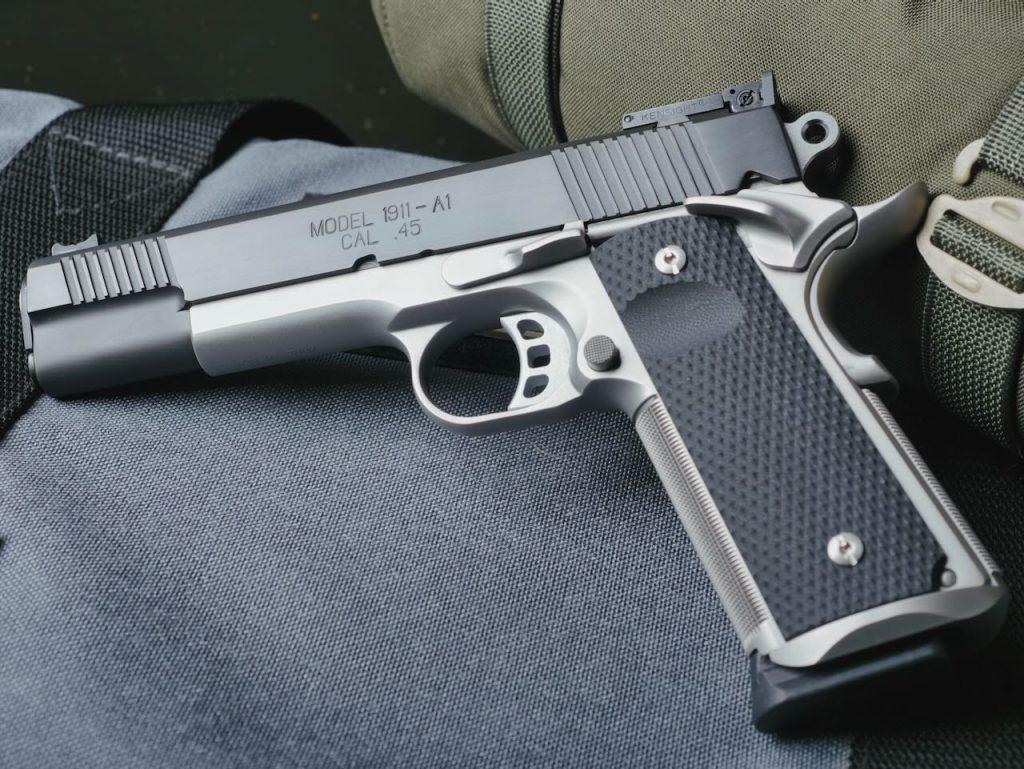
Range Time
So with all of that pre-text out of the way, how does it shoot?
Well, it’s beautiful. The trigger clocks in at a ridiculously crisp 3 lbs even after 10 pulls on a Wheeler digital gauge. The trigger shoe itself is Harrison’s Tri-Cav model with a smooth face and non-adjustable overtravel screw. I installed the same one on my Operator, and it took a lot of time to file down the overtravel stump on the back, but it’s not going anywhere.
The 25 LPI front strap checkering feels great. It provides plenty of bite, without feeling as sharp as the 20 LPI checkering that Springfield uses on the TRP models.
Recoil is about expected. It’s a 38 oz 1911 shooting 45 ACP after all. It’s perfectly enjoyable, but certainly more than the 9mm I’ve spent 15 years shooting.
Mark zeroed the sights for me after the install, and when I went to test they were dead on. In fact, my first shot went right through the 1″ X-Ring at 10 yards.
Perhaps the best part is that these updates seem to have resolved whatever reliability issues I had before sending it off. The gun did not like the first magazine I tried (an Ed Brown), but ran flawlessly for 200 rounds with the Mec Gar and Wilson Combat 8 rounders I brought along. That was a mix of 230 gr FMJ from PMC and Fiocchi, as well as the remains of a 18 year old box of Remington 230 gr Golden Saber JHP and a box of Speer 230 gr Gold Dot JHP. Prior to these updates, this gun never fed JHP well.
I don’t think Dave did any particular updates there, but rather rather the new fire control group resolved the issue. The slide used to hang up on the old factory disconnector during cycling, and that seems to be gone.
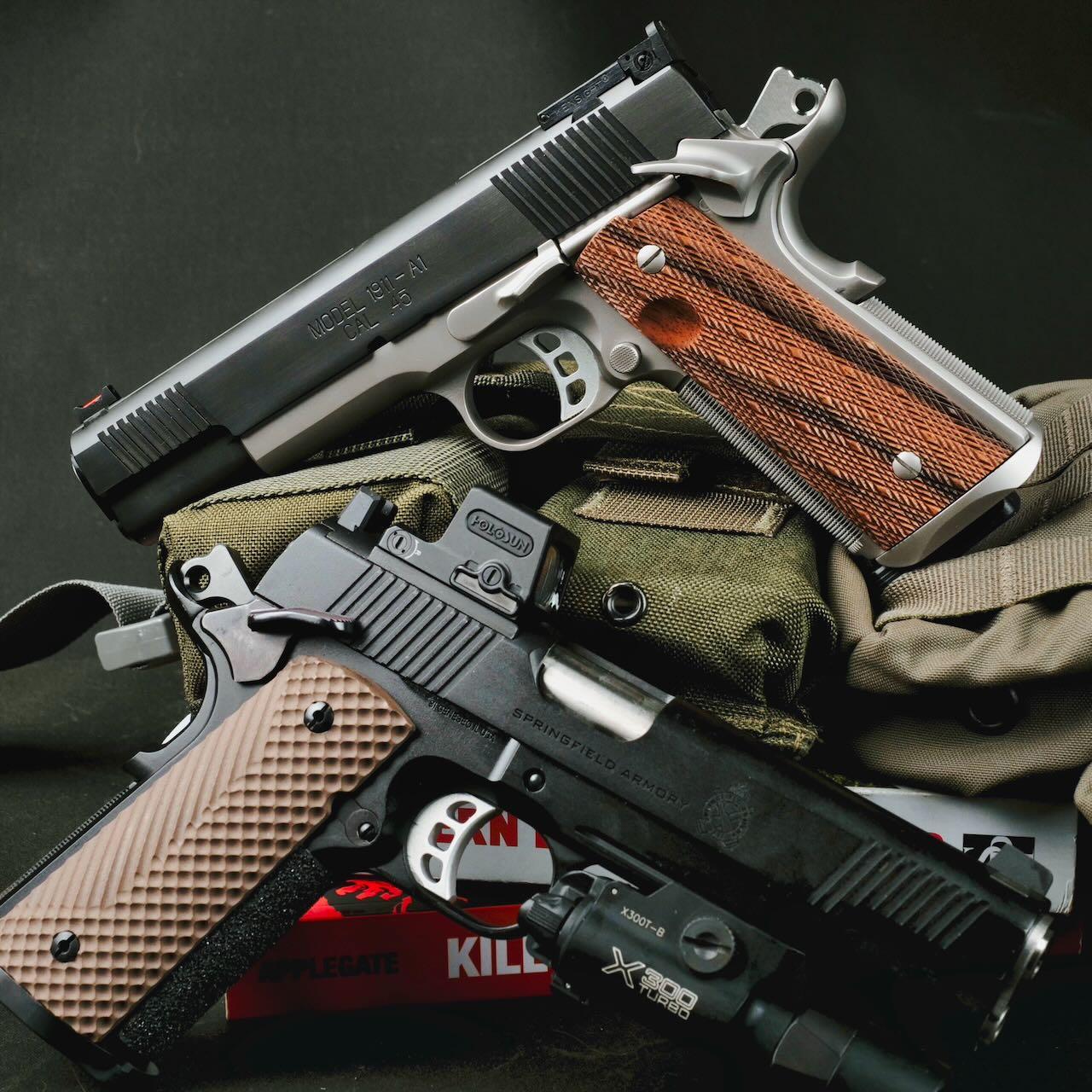
Wrapping Up
I should have said this earlier, but the Mark and Dave have no idea that I’m writing this up and I paid full retail price for their services (about $2000 in total). All communication went through an email address not affiliated with this site. I say that to be clear that the level of service and communication they provided was outstanding and not unique to me, but rather seems standard for their business.
This kind of project is not cheap, of course. On one hand, I still think it feels strange to spend multiple more dollars on modifying a pistol than the thing cost to purchase. On the other, I’ve gotten to the point where I don’t have much room left in the safe. I would rather invest further in what I have to make it something unique and special to me. I was so happy with my experience at Evolution Armory that I’m already planning what I want to do with the Operator, and also a possible complete ground-up build from scratch with them in the future.
I’m excited to get this gun out into some competitions. Given it’s drastic reliability improvements, I have a feeling I’ll end up carrying it from time to time.
So if you ever need 1911 work done, especially if it comes to finishing, I highly suggest checking them out.





Nice work, Matt! I shoot my 1911 left-handed often enough to appreciate that Harrison slide stop’s undercut. My left hand trigger finger’s knuckle would sometimes cause a Type 1 malfunction if my grip was too high on the pistol, causing contact with the standard slide stop.